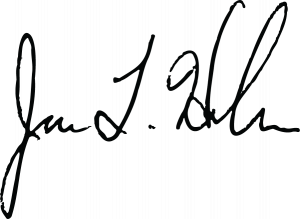A Message from Jim Hesselman, Dean of Arts & Letters

This quote is from The Science of Why by Simon Sinek.
Mr. Sinek’s bio states:
“Simon Sinek is an unshakable optimist who believes in a bright future and our ability to build it together. He discovered remarkable patterns about how the greatest leaders and organizations think, act and communicate.”
He “sells” his point of view by using something he calls the GOLDEN CIRCLE:

I wish everyone in the School of Arts & Letters a life inspired by dreams and fueled by purpose. Mr. Sinek’s ideas are plentiful in the form of books, pod casts, Ted talks, and video for everyone to use and explore as they will. But I want to talk about these ideas and concepts in terms of what we do here on campus and how it affects our students.
Many of you know my story about running back to the Theatre program (my home) about three months into my tenure as Dean and telling everyone that after 40 years of working in Theatre I never truly understood the gifts it was giving me until I stepped outside that world.
Theatre is not just about putting on shows. And I’m not speaking of the business side of the arts. Having produced and run theatre companies, I understand very well the business of Theatre. What I ran to the students to tell them was that the skills we were teaching through this art form were valuable in such a different way in the wider world. I discovered that I had taken for granted the skills needed in order to “open on Thursday” because I was so laser focused on creating the product all these years. And so I wrote those skills down as the:
SIX GIFTS THAT THEATRE GIVES YOU
- You FAIL all the time and get back up.
- You work with a group of people (you don’t necessarily even like) toward a common goal.
- You produce work in a certain set time-frame.
- You produce work with a budget that’s never enough.
- You produce work in a dangerous environment.
- You communicate creatively with each other and an audience.
I told the students, “Now pretty much go and run the world”. These six things teach critical thinking, conflict management, creative problem solving, human relations, inter-personal communication, and even MATH. They encourage and promote perseverance, humility, humor, empathy, and common sense.
And yet, the age old comment, “I really want to go into Theatre, but I’m afraid I won’t be able to get a job.” persists. Well, it’s our own fault in the Theatre. We have been concentrating on memorizing the lines, building the sets, and sewing the costumes. We should also have realized that we have the “WHYS” of Theatre sitting right in front of our noses, and have never promoted them as any sort of skill set.
I challenge all programs, all instructors, and all students to really examine the “why” of what you do – both personally and professionally.
Have a great semester!

|
|
|
|

